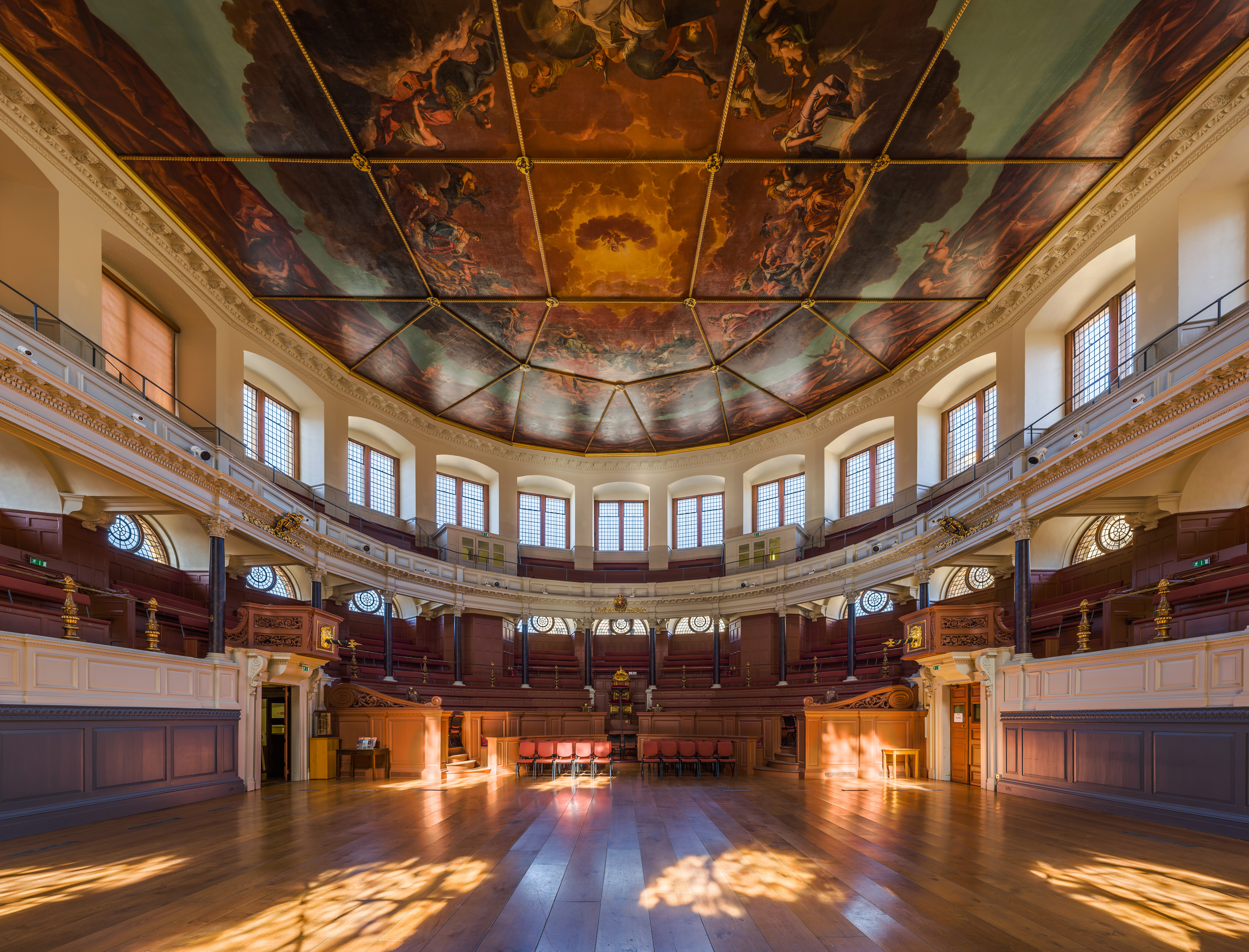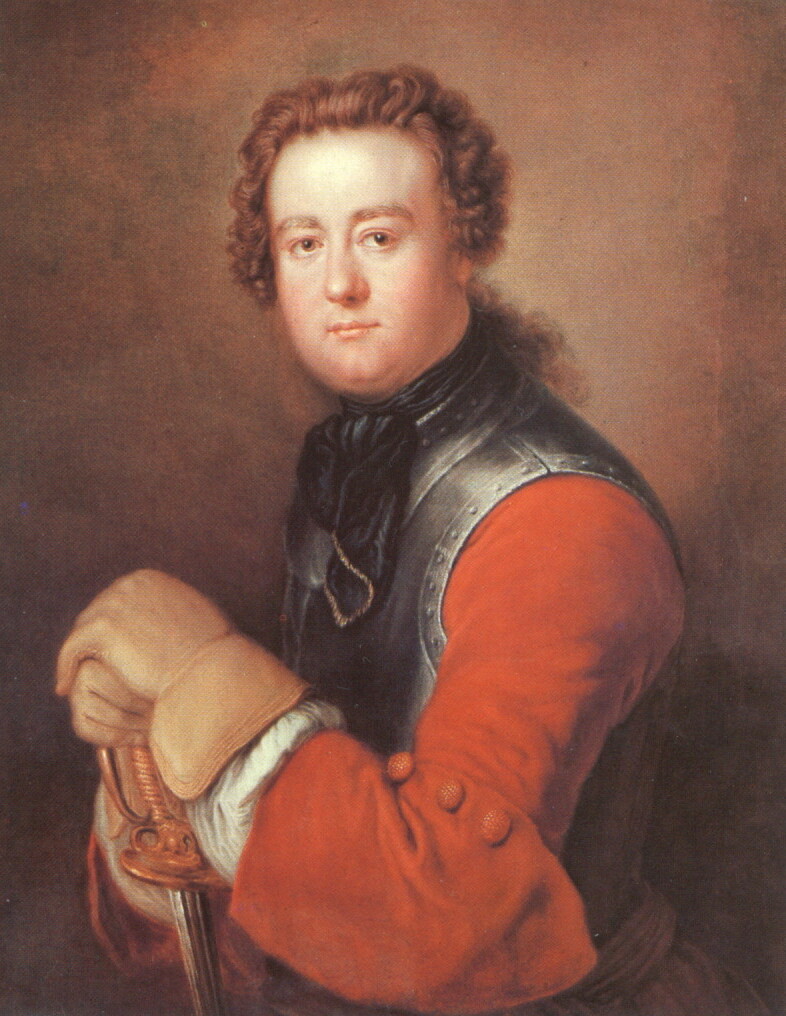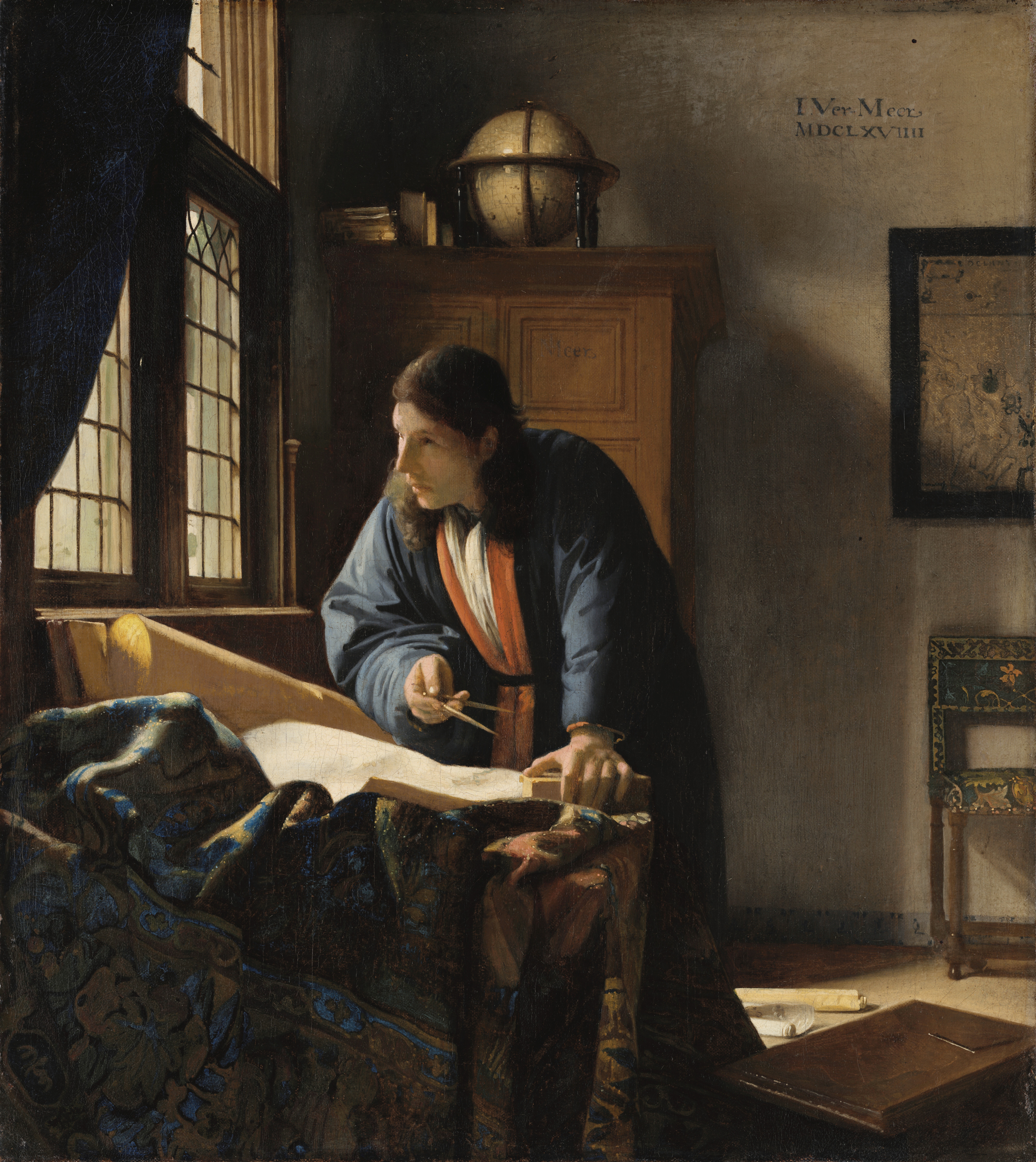|
1668 In Art
Events from the year 1668 in art. Events *The Sheldonian Theatre in Oxford is completed, to a design by Sir Christopher Wren with ceiling paintings by Robert Streater. Works *Viviano Codazzi and Filippo Lauri – ''The Bernini Arsenal at Civitavecchia'' *Jan de Bray – '' The artist and his wife as Ulysses and Penelope'' * Jean Baptiste Dieussart – lead statues ''Amor Dei'' and ''Amor Patriae'', Riddarhuset, Stockholm *Gerard de Lairesse – '' Allegory of the Five Senses'' *Charles Le Brun **''La Colère'' ** Equestrian portrait of Louis XIV *Adriaen van de Velde – ''Frozen Canal with Skaters and Hockey Players'' *Jan Vermeer **'' The Astronomer'' **''The Art of Painting'' (probably completed at or by this date) Births *''date unknown'' ** Giovanni Battista Cassana, Italian painter of fruit, flowers, and still-life (died 1738) ** Étienne-Jehandier Desrochers, French engraver (died 1741) **Yun Du-seo, Korean painter and scholar of the Joseon period (died 1715) ** Jan Gri ... [...More Info...] [...Related Items...] OR: [Wikipedia] [Google] [Baidu] |
Sheldonian Theatre
Sheldonian Theatre, located in Oxford, England, was built from 1664 to 1669 after a design by Christopher Wren for the University of Oxford. The building is named after Gilbert Sheldon, chancellor of the University at the time and the project's main financial backer. It is used for music concerts, lectures and University ceremonies, but not for drama until 2015 when the Christ Church Dramatic Society staged a production of ''The Crucible'' by Arthur Miller. History What came to be known as the Sheldonian Theatre was Wren's second work and was commissioned by Gilbert Sheldon, Archbishop of Canterbury. With the triumph of the Restoration and with it the Church of England, Dean Fell, Vice-Chancellor of the University, sought to revive a project proposed in the 1630s by the late William Laud, Archbishop of Canterbury: a separate building whose sole use would be graduation and degree ceremonies. In the past these increasingly rowdy occasions had taken place in the University Chur ... [...More Info...] [...Related Items...] OR: [Wikipedia] [Google] [Baidu] |
Charles Le Brun
Charles Le Brun (baptised 24 February 1619 – 12 February 1690) was a French painter, physiognomist, art theorist, and a director of several art schools of his time. As court painter to Louis XIV, who declared him "the greatest French artist of all time", he was a dominant figure in 17th-century French art and much influenced by Nicolas Poussin. Biography Early life and training Born in Paris, Le Brun attracted the notice of Chancellor Séguier, who placed him at the age of eleven in the studio of Simon Vouet. He was also a pupil of François Perrier. At fifteen he received commissions from Cardinal Richelieu, in the execution of which he displayed an ability which obtained the generous commendations of Nicolas Poussin, in whose company Le Brun started for Rome in 1642. In Rome, he remained four years in the receipt of a pension due to the liberality of the chancellor. There he worked under Poussin, adapting the latter's theories of art. While in Rome, Le Brun studied anc ... [...More Info...] [...Related Items...] OR: [Wikipedia] [Google] [Baidu] |
1715 In Art
Events from the year 1715 in art. Events * Paintings * Thomas Gibson – Portrait of George Vertue * Sir Godfrey Kneller – Portraits of ** John Erskine, Earl of Mar ** Frances Erskine Countess of Mar ** Lady Anne, Countess of Sunderland and her daughter Diana ** Charles Talbot, Duke of Shrewsbury * Rachel Ruysch – '' Bouquet of Flowers'' (Alte Pinakothek, Munich) Births * February 22 – Charles-Nicolas Cochin, French engraver, designer, writer, and art critic (died 1790) * July 4 – Charles Francois Hutin, French history and figure painter, engraver and sculptor (died 1776) * July 11 – Jean-Joseph Balechou, French engraver (died 1765) * August 25 – Luis González Velázquez, Spanish late-Baroque painter (died 1763) * November 5 – Johann Georg Wille, German copper engraver (died 1808) * November 30 – Johan Jacob Bruun, Danish gouache painter most known for his topographic prospects (died 1789) * December 11 – Johann Valentin Tischbein, German theatre painter (d ... [...More Info...] [...Related Items...] OR: [Wikipedia] [Google] [Baidu] |
Joseon Dynasty
Joseon (; ; Middle Korean: 됴ᇢ〯션〮 Dyǒw syéon or 됴ᇢ〯션〯 Dyǒw syěon), officially the Great Joseon (; ), was the last dynastic kingdom of Korea, lasting just over 500 years. It was founded by Yi Seong-gye in July 1392 and replaced by the Korean Empire in October 1897. The kingdom was founded following the aftermath of the overthrow of Goryeo in what is today the city of Kaesong. Early on, Korea was retitled and the capital was relocated to modern-day Seoul. The kingdom's northernmost borders were expanded to the natural boundaries at the rivers of Amrok and Tuman through the subjugation of the Jurchens. During its 500-year duration, Joseon encouraged the entrenchment of Confucian ideals and doctrines in Korean society. Neo-Confucianism was installed as the new state's ideology. Buddhism was accordingly discouraged, and occasionally the practitioners faced persecutions. Joseon consolidated its effective rule over the territory of current Korea and saw the ... [...More Info...] [...Related Items...] OR: [Wikipedia] [Google] [Baidu] |
Korea
Korea ( ko, 한국, or , ) is a peninsular region in East Asia. Since 1945, it has been divided at or near the 38th parallel, with North Korea (Democratic People's Republic of Korea) comprising its northern half and South Korea (Republic of Korea) comprising its southern half. Korea consists of the Korean Peninsula, Jeju Island, and several minor islands near the peninsula. The peninsula is bordered by China to the northwest and Russia to the northeast. It is separated from Japan to the east by the Korea Strait and the Sea of Japan (East Sea). During the first half of the 1st millennium, Korea was divided between three states, Goguryeo, Baekje, and Silla, together known as the Three Kingdoms of Korea. In the second half of the 1st millennium, Silla defeated and conquered Baekje and Goguryeo, leading to the "Unified Silla" period. Meanwhile, Balhae formed in the north, superseding former Goguryeo. Unified Silla eventually collapsed into three separate states due to ... [...More Info...] [...Related Items...] OR: [Wikipedia] [Google] [Baidu] |
Yun Du-seo
Yun Du-seo (1668–1715) was a painter and scholar of the Joseon period. He is the grandson of Yun Seondo, a great scholar in Korean history. He passed the gwageo exam, but did not enter government service. Rather, he devoted his whole life to painting and studying Confucianism. His self-portrait is regarded as one of the many masterpieces of Korean art. Yun Du-seo is also known for his '' yeongmohwa'' (animal-and-bird painting). Gallery Image:Yun.Duseo-Yuha.Baekma.do.jpg, ''White horse under the willow'' (유하백마도) Image:Yun Duseo-Women Picking Edible Plants.png, ''Women Picking Edible Plants'' Image:Yun Duseo-Old Man Making Straw Shoes.png, ''Old Man Making Straw Shoes'' Image:Korea-map-Dongguk yeoji jido-by Yun Duseo.jpg, ''Dongguk yeoji jido'' (동국여지지도) drawn by Yun Duseo See also *Korean painting *List of Korean painters *Korean art *Korean culture The traditional culture of Korea is the shared cultural and historical heritage of Korea and souther ... [...More Info...] [...Related Items...] OR: [Wikipedia] [Google] [Baidu] |
1741 In Art
{{Year nav topic5, 1741, art Events from the year 1741 in art. Events *At the request of the new Empress Elizabeth of Russia, painter Ivan Nikitich Nikitin begins his journey back from exile in Tobolsk to Saint Petersburg but dies ''en route''. *Charles-Joseph Natoire produces a series of cartoons for the Gobelins tapestries ''History of Mark Anthony''. *A major collection of Old Master drawings and other material from the collection of Pierre Crozat (died 1740) is auctioned in Paris; the catalogue written by Pierre-Jean Mariette is the first modern descriptive sale catalogue. Works * Pietro Longhi – ''La lezione di danza'' * Michele Marieschi – ''Magnificentiores Selectioresque Urbis Venetiarum Prospectus'' (engravings) * Martin van Meytens – Portrait of Francis I, Grand Duke of Tuscany Births *February 7 – Henry Fuseli, Swiss-born British painter, draughtsman, and writer on art (d. 1825) *March 1 - Johann Georg Edlinger, Austrian court painter (died 1819) *March 18 � ... [...More Info...] [...Related Items...] OR: [Wikipedia] [Google] [Baidu] |
Étienne-Jehandier Desrochers
Étienne-Jehandier Desrochers (1668, Lyon – 1741, Paris) was an 18th-century French engraver best known for his small portraits of his contemporaries. Some Engravings * Collection of engravings in London * John Theophilus Desaguliers * "Portrait of John Law, half-length, head turned to the right, with unrolled parchment in left hand; within oval. 1720" * "Danae, sprawling semi-nude on a richly draped bed… (1700-1702" * "Prince Eugene of Savoy, head-and-shoulders portrait..." Main illustrated books * Jean de La Fontaine, ''Fables choisies'', Paris & La Haye, chez Henry Van Bulderen, marchand libraire dans le Pooten, à l'enseigne de Mezeray, 1688 * Nicolas de La Mare, ''Traité de la police'', Paris, Jean & Pierre Cot, 1705-1719; rééd. chez Michel Brunet, 1722. * Nicolas Malebranche, ''De la recherche de la vérité...'', Paris, chez Michel David, 1712. * Abbé de Bellegarde, ''De l'Imitation de Jésus-Christ, traduction nouvelle, plus ample que toutes les précédent ... [...More Info...] [...Related Items...] OR: [Wikipedia] [Google] [Baidu] |
1738 In Art
{{Year nav topic5, 1738, art Events from the year 1738 in art. Events * Louis-François Roubiliac's sculpture of George Frederick Handel goes on display at Vauxhall Gardens in London. Paintings * Jean-Baptiste-Siméon Chardin – ''The Wash Barrel'' * Louis de Silvestre – '' Portrait of the Princess Maria Amalia of Saxony in Polish costume'' * Jean-Baptiste van Loo – Portrait of William Murray Births * January 3 – Johann Friedrich Bause, German engraver (died 1814) * June 4 – George III of the United Kingdom, patron of the arts and collector (died 1820) * June 10 – Hubert Maurer, Austrian painter of portraits and religious themes (died 1818) * July William Wynne Ryland, English engraver (died 1783) * August 6 – Johann Balzer, Czech etcher and engraver (died 1799) * October 10 – Benjamin West, painter (died 1820) * December 20 – Claude Michel, French sculptor in the Rococo style (died 1814) * ''date unknown'' ** William Cochran, Scottish portrait painter both i ... [...More Info...] [...Related Items...] OR: [Wikipedia] [Google] [Baidu] |
Giovanni Battista Cassana
Giovanni Battista Cassana (1668–1738) was an Italian painter. He was born the youngest son of Giovanni Francesco Cassana. He excelled in painting fruit, flowers, and still-life. See also *Cassana (family) The Cassana were a family of Italian Baroque painters of the 17th and early 18th centuries. Family members included: *Giovanni Francesco Cassana (1611–1691), baroque painter of the Genovese school. *Abbate Giovanni Agostino Cassana (1658-1720), ... References * People from Mirandola 17th-century Italian painters Italian male painters 18th-century Italian painters Italian still life painters 1668 births 1738 deaths 18th-century Italian male artists {{Italy-painter-17thC-stub ... [...More Info...] [...Related Items...] OR: [Wikipedia] [Google] [Baidu] |
The Art Of Painting
''The Art of Painting'' (Dutch: ''Allegorie op de schilderkunst''), also known as ''The Allegory of Painting'', or ''Painter in his Studio'', is a 17th-century oil on canvas painting by Dutch painter Johannes Vermeer. It is owned by the Austrian Republic and is on display in the Kunsthistorisches Museum in Vienna. Many art historians think that it is an allegory of painting, hence the alternative title of the painting. Its composition and iconography make it the most complex Vermeer work of all. After Vermeer's ''Christ in the House of Martha and Mary'' and ''The Procuress'' it is his largest work. This illusionistic painting is one of Vermeer's most famous. In 1868 Thoré-Bürger, known today for his rediscovery of the work of painter Johannes Vermeer, regarded this painting as his most interesting. Svetlana Alpers describes it as unique and ambitious; Walter Liedtke "as a virtuoso display of the artist's power of invention and execution, staged in an imaginary version of hi ... [...More Info...] [...Related Items...] OR: [Wikipedia] [Google] [Baidu] |
The Astronomer (Vermeer)
''The Astronomer'' (Dutch: ) is a painting finished in about 1668 by the Dutch Golden Age painter Johannes Vermeer. It is in oil on canvas with dimensions . Description Portrayals of scientists were a favourite topic in 17th-century Dutch painting and Vermeer's oeuvre includes both this astronomer and the slightly later ''The Geographer''. Both are believed to portray the same man, possibly Antonie van Leeuwenhoek. A 2017 study indicated that the canvas for the two works came from the same bolt of material, confirming their close relationship. The astronomer's profession is shown by the celestial globe (version by Jodocus Hondius) and the book on the table, the 1621 edition of Adriaan Metius's . Symbolically, the volume is open to Book III, a section advising the astronomer to seek "inspiration from God" and the painting on the wall shows the Finding of Moses—Moses may represent knowledge and science ("learned in all the wisdom of the Egyptians"). Provenance The provenance ... [...More Info...] [...Related Items...] OR: [Wikipedia] [Google] [Baidu] |






